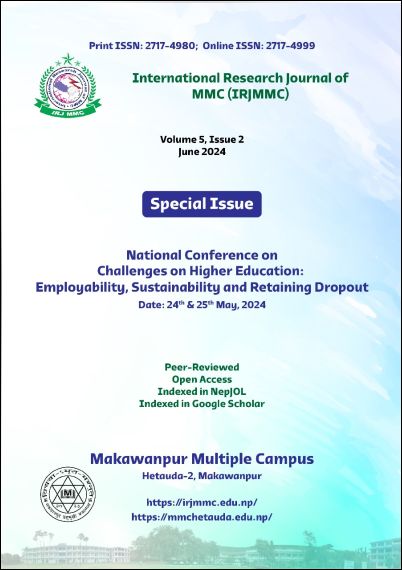Exploring Dropouts as Challenges in Higher Education in Nepal: A Comprehensive Review
DOI:
https://doi.org/10.3126/irjmmc.v5i2.67727Keywords:
Empowerment, Financial inclusion, Poverty alleviation, Social impact, SustainabilityAbstract
The purpose of this study is to analyse the dropout rate of campus level of students in Nepal. The researchers adopted the process of scientific review as a meta-synthesis to analyse the dropout rate of the campus level students. An in-depth archival analysis followed by an intensive review would be strategies adopted during the scientific review. Secondary data was gathered by searching Google for scholarly publications and articles published between 2001 and 2024. The students want part-time jobs during the study. Such opportunities are less common in Nepal. The research study revealed that Nepali students gave their first priority to Australia, Canada, the USA, and Europe for their higher studies. After finishing their studies, they desired to stay there due to their job security. They applied for green card and permanently stayed there. On the other hand, Nepal lost young and skilled manpower who stayed abroad as immigrants. The study reveals that government can prevent brain-drain by proving financial assistance and employment opportunities to bachelor’s level students. The Nepalese government should make appropriate policy to retain its young workforce. Otherwise, its adverse impact will be seen soon.
Downloads
Downloads
Published
How to Cite
Issue
Section
License
Copyright (c) 2024 The Author(s)

This work is licensed under a Creative Commons Attribution-NonCommercial 4.0 International License.
This license enables reusers to distribute, remix, adapt, and build upon the material in any medium or format for noncommercial purposes only, and only so long as attribution is given to the creator.

